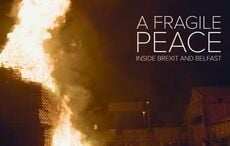Here's a good question. Why has it taken the Irish Department of Education so many decades to find an effective way to teach the Irish language to young people so that they can see the point of it and actually want to learn?
Could it be because for decades they have treated it like a sanctified religious relic? Like something so precious and holy that it has to be parceled out with hushed reverence?
Could it be that the stony faced awe with which they speak (and often teach) it has actually done more harm than good, having the opposite effect of the one they intended? What if an excess of love had actually made Irish unlovable?
Language has to live in the world. It has to get its hands dirty, just like people. If your impulse is to shield it from too much contact with impurity then you’re already damaging its reach.
In Ireland for decades we have had a language keeper (the school teacher) and the recipients (their captive pupils). Worse, it’s a compulsory exam subject for most of us and, worse again, it’s taught like one.
Our main objective is to secure a good grade, not unlock the potent secrets of our own half-hidden legacy and culture. It’s an appallingly shortsighted approach, which is also why it has endured as long as it has.
Worse than the uninspired methods of instruction are the course syllabus. You would have to search for a year without ceasing to find a person more suited to the job of alienating young people than Peig Sayers, the sanctified babushka mouthpiece of the late Gaelic Revival.
“I am an old woman now, with one foot in the grave and the other on its edge,” she says at the start of her infamous memoir, a never-ending catalogue of lamentations and woes.
“I have experienced much ease and much hardship from the day I was born until this very day. Had I known in advance half, or even one-third, of what the future had in store for me, my heart wouldn't have been as gay or as courageous it was in the beginning of my days.”
Read more: Irish words litter New York City slang
Ew, downer. What whey-faced idiot thought that this was the best possible introduction to the national language Irish teenagers could have asked for?
Only someone who has completely forgotten what it is to be a teenager could have picked her. Only someone who had forgotten what it felt like to have a life force blazing within you, forgotten what it was to feel eternal and invincible from morning till night.
Who but a seven-day idiot would have selected a joyless old pensioner Peig to be the standard bearer of the language itself?
Maybe, as some have argued, in her private life Sayers could crack a good joke, but it hardly matters. It’s through her memoir that we must contend with her, and it’s through her memoir that she does great violence to the Irish language’s revival.
Why at school were we not taught the panache and brio of an Irish curse? They are so remarkably energetic, surreal and multifaceted that they leap to life in a way that Sayers never could or will.
Why were we not taught that our inability to make a long story short or answer a direct question also comes down to us from centuries (and millennia) of the Irish language itself?
Irish has no words for “yes” or “no.” Instead, you repeat the verb in its positive form to reply in the affirmative and in its negative form to reply in the negative.
For example, if I asked you “would you like a cup of tea” in Irish and you replied simply “yes,” it would be considered abrupt to the point of rudeness. In Irish you must take your time. You can meander a bit, you can reply “I would like a cup of tea,” but you never say a plain, stark “yes.”
Some people who aren’t very fluent in the language use tá and níl respectively. It’s terrible grammar and it reveals they’re not fluent speakers to those who are.
Why were we not taught how nimble and beautiful Irish is? How when you revert back to English from the Irish, it’s like passing from a clear, swift current into a belabored and imprisoning treacle?
Why wasn’t this explained to us? Better yet, what prevented us from discovering for ourselves?
Reverence has its place in life, but not in a living language. If Irish is not to become a museum piece we have to stop thinking about it and teaching it as if it was.
Read more: The best ways to learn the Irish language for free




Comments